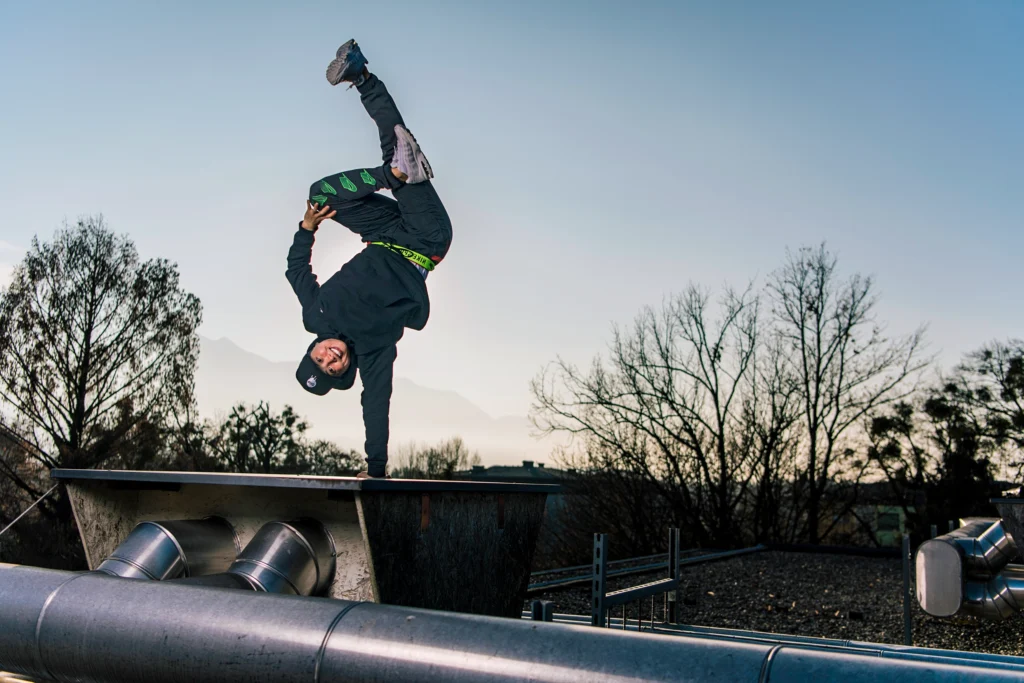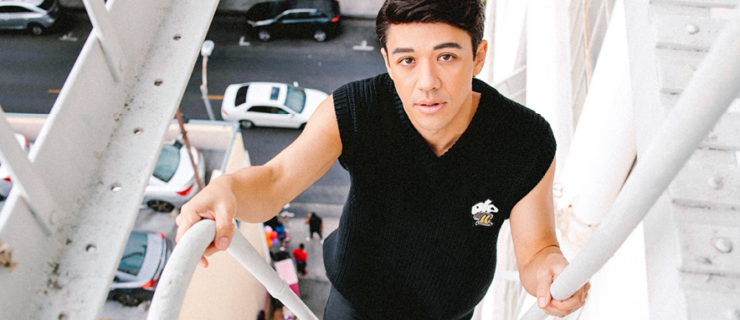Breaking New Ground: For the First Time in History, Dancers Are Competing at the Olympics
B-girl Sunny Choi’s life looks very different today than it did a couple of years ago. She quit her high-powered job as director of global creative operations at Estée Lauder’s skin-care branch, and is now focused on dance training full-time. She’s secured sponsorships from Nike and Samsung, and she moved into a new apartment in Queens, New York, that has a living room big enough to dance in.
It’s all in pursuit of one goal: to win gold this summer, during the first time in history that the Olympic Games will feature a breaking competition.

Thirty-two dancers total—16 b-boys and 16 b-girls—will compete battle-style in Paris’ Place de la Concorde to sold-out crowds on August 9 and 10. Qualifying competitions have been going on since 2022, with the final two happening just this May and June. Choi and b-boy Victor Montalvo were the first to qualify for the U.S. breaking team. Last week, at the culmination of the qualifier series, another four dancers—Vicki “La Vix” Chang, Logan “Logistx” Edra, Jeffrey “Jeffro” Louis, and Miguel Angel Rosario Jr., aka “B-boy Gravity”—competed for the last two potential U.S. spots (one for a b-boy and one for a b-girl), with Edra and Louis ultimately earning them.
The Olympic Games are by no means the first worldwide breaking event. But they do mark the first time that a breaking competition is being put on in a big way for the general public, not just the breaking community itself.
That’s drawn its fair share of side-eye. Some people unfamiliar with breaking have questioned the idea of it being classified as a “sport.” And some in the breaking community worry that taking part in the Olympics will water down the culture. Dancers taking part, however, see it differently. “We’re always going to have our underground events, our local events for the community,” says Chang. “But this way, we can also show what we do to people who otherwise might not even know that it exists.”
Or, as Edra puts it, “Sometimes we are seen more and sometimes we are seen less—it doesn’t change the way we are representing. It just adds to the type of motivation.”
Balancing Regimented Scoring and Artistic Freedom
Of course, some elements of a traditional battle have been tweaked in its translation for the Olympic stage. Most notable is the more regimented scoring. “In cultural breaking events, it’s based off of opinion—it’s super-subjective,” says Montalvo. But at Olympic competitions and qualifiers, there’s a structured points system. That rewards a slightly different strategy, Montalvo believes: “You have to be more explosive from beginning to end, getting straight to the point, doing big moves on the beat, ending off with a big freeze. And if you’re too complex, really being super-creative, I feel like you don’t get too far.” Because judges are ticking off particular boxes to tally the score, dancers need to be well-rounded, whereas, Louis says, in other competitions a breaker could just do one thing really well and win with that.

Po Chun Chen, aka “Bojin,” head of the breaking division of the World DanceSport Federation (the organization helping to oversee breaking at the Olympics), acknowledges that it’s been a challenge to balance the sport and the culture in a dance form started by oppressed people looking for a way to freely express themselves. “We cannot lose the original soul of breaking, which is the freedom,” he says. One way in which the WDSF is attempting to honor the hip-hop roots of breaking at the Olympics is by starting out the competition with the judges showing off their own skills in a cypher as a way of celebrating the culture. Though the practice would be unthinkable in figure skating or gymnastics, “this is our culture,” says Chen.
New Benefits and Growing Pains

Despite any debates over authenticity, one thing is clear: The Olympics are creating a high-performance support system for top-ranking breakers. The highest scorers from qualifying competitions are now part of Team USA, and have been flown to the Olympic facility in Colorado Springs a handful of times for training camps. They’ve been given strength and conditioning coaches, sports psychologists, dietitians, and health-care coverage. Some have also received grants, like the one from the Women’s Sports Foundation that Chang has used to rent studio space so she doesn’t have to dance outside. “There’s a lot of different resources that we, as breakers, have never seen before,” says Louis.
That said, because breaking is brand-new to the Olympics, the infrastructure and monetary support lags far behind more established sports like rowing or swimming. “They’re being treated like the world’s greatest athletes. We’re being treated more like very talented dancers. That’s the disconnect right now,” says Ivan “Flipz” Velez, who will be the judge representing North America in Paris. There’s reportedly been some scrambling involved as WDSF figures out the details of breaking becoming an Olympic sport. Dancers say they had to stay flexible and adapt quickly to changes as organizers decided exactly what the judging system would look like, how music would be handled, and what type of floor would be used.
A Transformative Time
Many of breaking’s Olympic hopefuls have already seen their lives change dramatically. Montalvo shares that he’s had a slew of press requests and has sponsorship deals from major brands like Red Bull, Delta, Comcast, Jack in the Box, and Athletic Brewing. “There’s a lot of media that wants to know what breaking is all about,” he says. “This has been the busiest year of my life.”
Choi says that juggling appearances and events along with corporate partnerships and media interviews has actually made it tricky to prepare the way she wants to. “It’s been really amazing but also challenging, because I know I need to be focusing on training for the Olympics,” she says.

Even dancers who didn’t know whether they would qualify until June upended their lives for the possibility. Chang says she stopped working as a restoration ecologist to pursue breaking as a career. She now dances with her crew two to three hours a day, five days a week; cross-trains for an hour four days a week; does biweekly sessions with a sports therapist; and joins regional competitions for practice on some weekends. In addition to physical prep, Louis shares that he’s been studying his past competitions to analyze his strengths and weaknesses, dissecting videos of competitors, and watching footage from the 1980s to diversify his arsenal of movements.
The effort is worth it because these dancers’ dreams for the Olympics are about more than medals. Montalvo hopes the coverage will get a younger generation in the U.S. interested in breaking. Louis hopes it leads to more professional opportunities for breakers to make a living. And Velez hopes the Olympic spotlight gives breaking the same level of prestige as ballet.
“We’re flying as well, with the double air flares and multiple 1990s—and sometimes nobody trains us,” says Velez. “I want there to be this worldwide awakening to accept us as artists, not as ‘underground,’ these terms that suppress us and keep us from being seen in our biggest light. ’Cause this is the biggest light, the biggest stage we’re going to be on.”
A Longtime Dream Fulfilled
Insiders say that Choi, the first American b-girl to qualify for the Olympics, is a front-runner to medal at the Games. But for her, just the opportunity to compete marks a full-circle moment: When she was young, Choi was a serious, Olympic-track gymnast.
“I used to draw pictures of me competing at the Olympics as a child,” she says. “To have this opportunity come back to me and to see it through, it’s really fulfilling and special. Little Sunny would be so proud of me.”
Breaking’s Olympic Future
Unfortunately, it’s already been announced that there will be no breaking competition at the 2028 Olympic Games in Los Angeles. “Come on, it was born in this country! How is it not going to come back to its motherland?” asks Velez. But a successful run in Paris could pave the way for the sport’s return at the Brisbane Olympics in 2032.
“We’re using the example of baseball as our guide,” says Chen, head of the breaking division of the World DanceSport Federation. Baseball was left out of the Paris Games, but it will be back in the 2028 Olympics.





